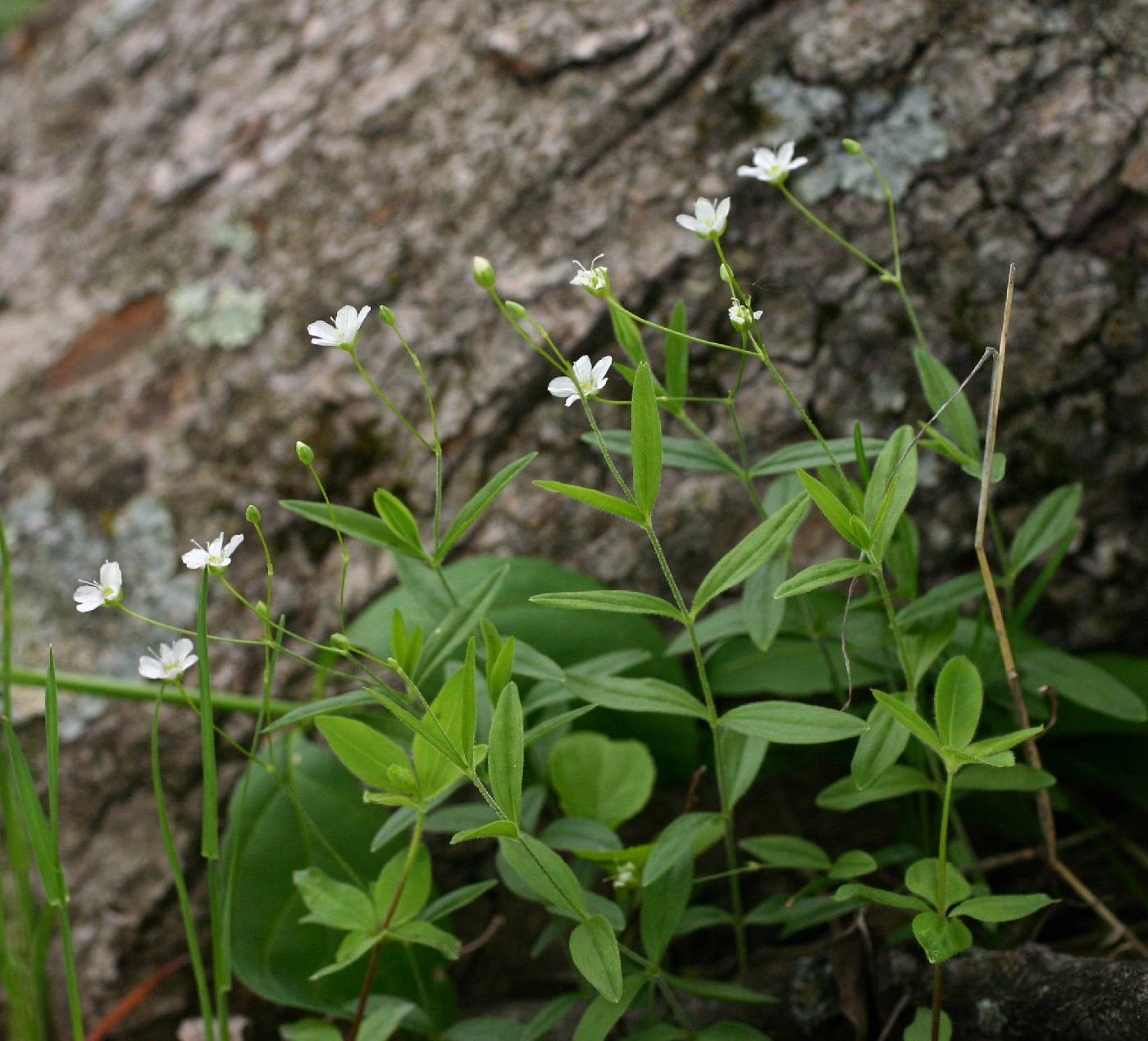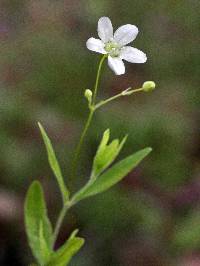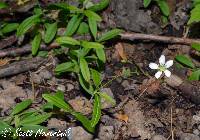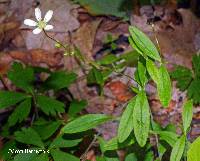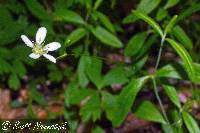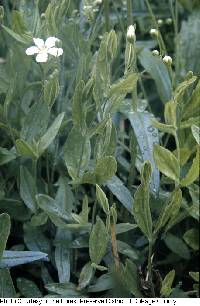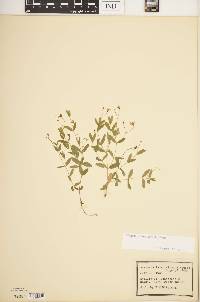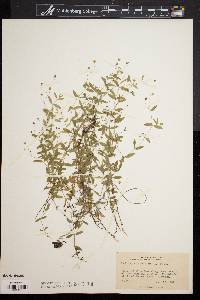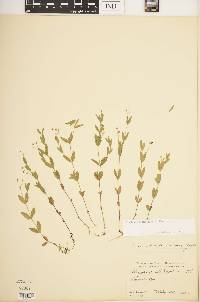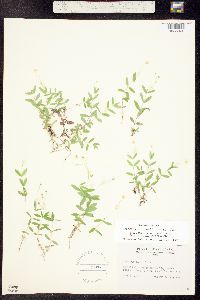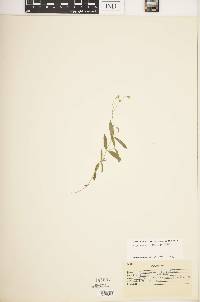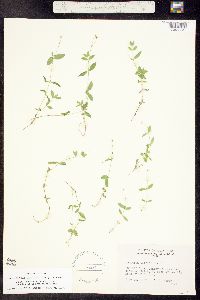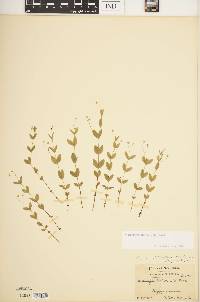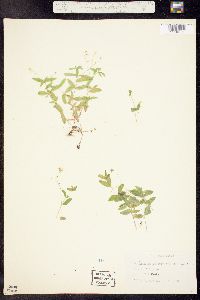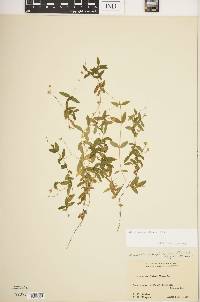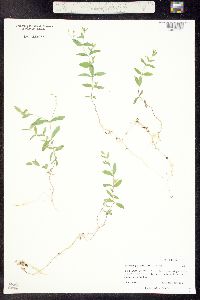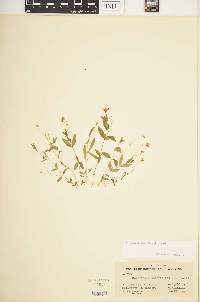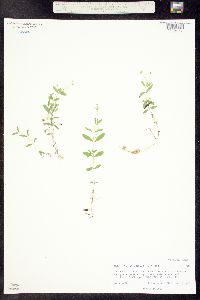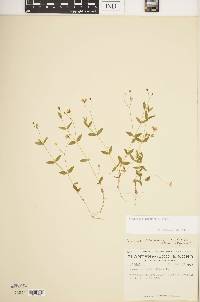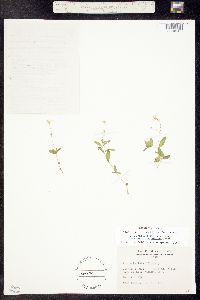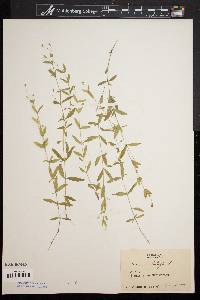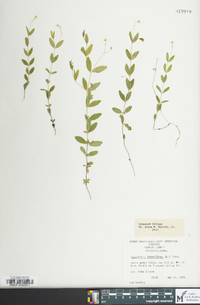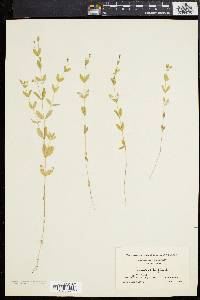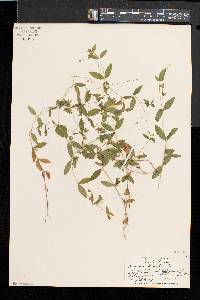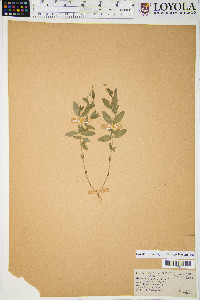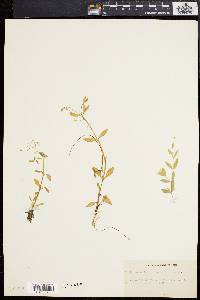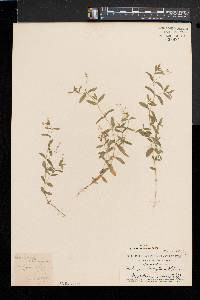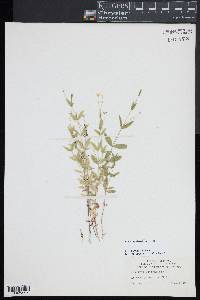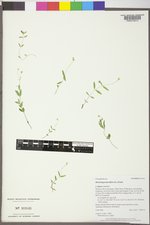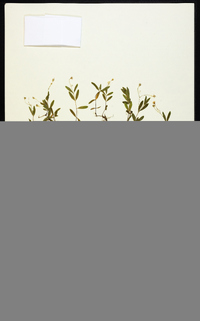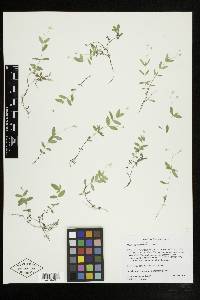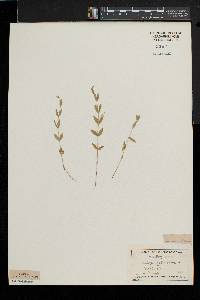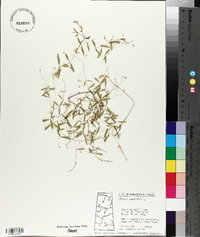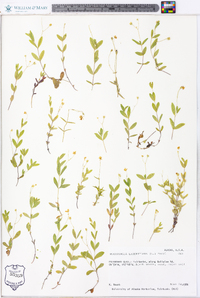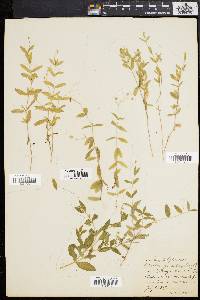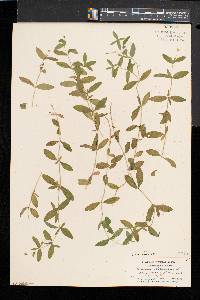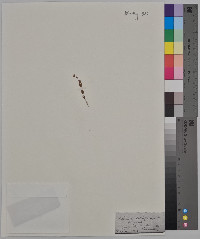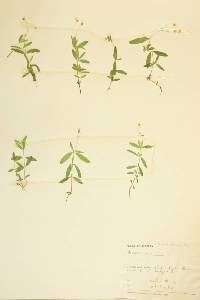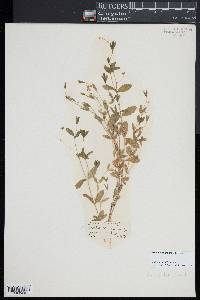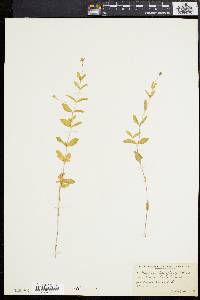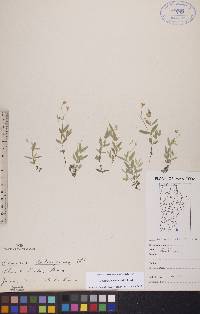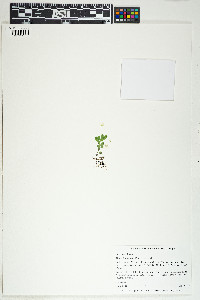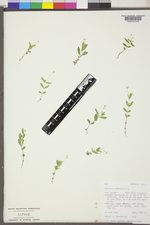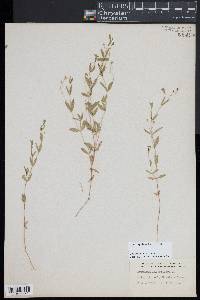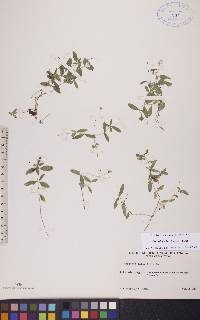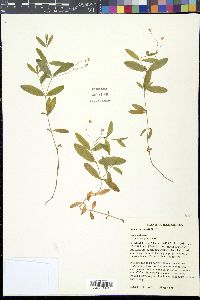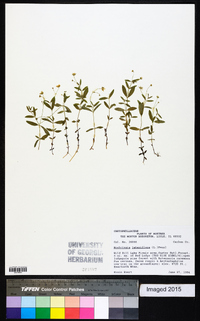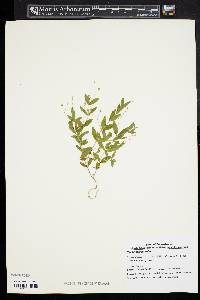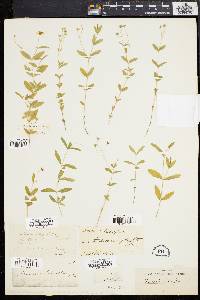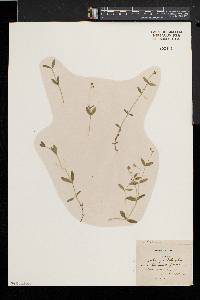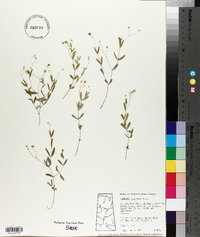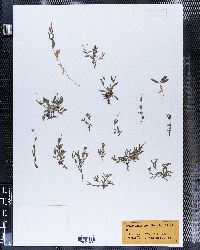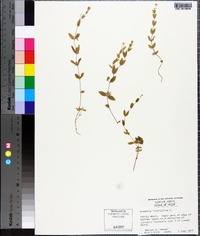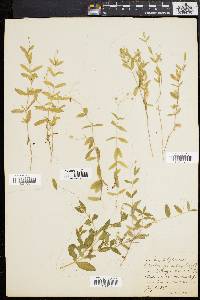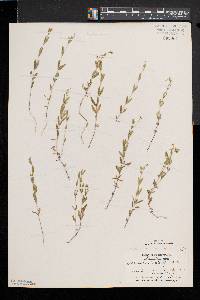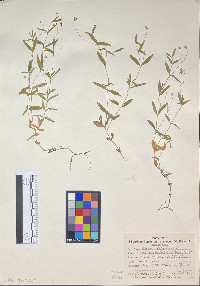Moehringia lateriflora
|
|
|
|
Family: Caryophyllaceae
Blunt-Leaf Grove-Sandwort, more...bluntleaf sandwort
[Arenaria haenkeana Bartl., moreArenaria lateriflora L., Arenaria lateriflora var. angustifolia H.St.John, Arenaria lateriflora var. taylorae H. St. John, Arenaria lateriflora var. tayloriae] |
Plants perennial. Rhizomes forming extensive network. Stems ascending or decumbent, often branched, terete, 5-30 cm, uniformly retrorsely pubesescent. Leaves sessile or subsessile; petiole 0.1-1 mm; blade 1-3-veined, broadly elliptic to oblong-elliptic or oblanceolate, 6-30(-35) × (2-)5-10(-17) mm, margins granular to minutely serrulate-ciliate, apex obtuse or rounded. Inflorescences 1-5-flowered; bracts 1-3 mm, margins scarious. Pedicels erect, 3-30 mm. Flowers: sepals 5, midrib not keeled, ovate or obovate, herbaceous portion oblong to elliptic, 1.7-2.8(-3) mm, margins narrow, apex mostly obtuse or rounded; petals 5, 3-6 mm, ca. 2 times as long as sepals. Capsules subglobose, 3-5 mm, 11/ 2-2 times as long as sepals. Seeds reniform, 1 mm, smooth. 2n = 48. Flowering spring-early summer. Moist or dry woodlands, meadows, gravelly shores; 50-2700 m; St. Pierre and Miquelon; Alta., B.C., Man., N.B., Nfld. and Labr., N.S., Nunavut, Ont., P.E.I., Que., Sask., Yukon; Alaska, Colo., Conn., Idaho, Ill., Ind., Iowa, Maine, Md., Mass., Mich., Minn., Mo., Mont., Nebr., Nev., N.H., N.J., N.Mex., N.Y., N.Dak., Ohio, Oreg., Pa., R.I., S.Dak., Utah, Vt., Va., Wash., W.Va., Wis., Wyo.; Europe; Asia. Four varieties of Moehringia laterifolia have been described based on variation in leaf width and pubescence; they have been little used, and the variation appears not to be correlated with geography.
Perennial herb with a rhizome 5 - 30 cm tall Stem: ascending or decumbent, often unbranched, leafy, minutely hairy. Leaves: opposite, stalkless or nearly stalkless, 1 - 3 cm long, 0.5 - 1 cm wide, lance-shaped to elliptic with a rounded tip, one- to three-veined. Inflorescence: a solitary flower or cluster (cyme) of two to five flowers on a 1 - 3 cm long stalk. Flowers: white. Stalk upright, 0.5 - 1.5 cm long, minutely hairy. Stamens ten. Styles three. Sepals: five, 2 - 3 mm long, egg-shaped or reverse egg-shaped with a blunt or almost pointed tip, faintly three- to five-veined. Petals: five, white, 3 - 6 mm long (about twice as long as the sepals). Fruit: a dehiscent capsule (opening by six teeth), 3 - 5 mm long, almost spherical. Seeds kidney-shaped and glossy. Similar species: The lance- to egg-shaped leaves (usually over 2 mm wide) help distinguish this species and Arenaria serpyllifolia from all other Arenaria in the Chicago Region. Arenaria serpyllifolia differs by having pointed, egg-shaped leaves that are less than 1 cm long and 5 mm wide. Flowering: late April to early July Habitat and ecology: Frequent in dry or mesic woods, usually ones that are somewhat open. Occasionally found in the remnants of prairies. Occurence in the Chicago region: native Etymology: Arenaria comes from the Latin word arena, meaning sand, referring to the fact that most species in this genus prefer sandy habitats. Lateriflora means "on the side flowers" or "lateral flowers." Author: The Morton Arboretum Colonial by rhizomes, the stem leafy, retrorsely puberulent; lvs 1-3 cm נ5-10 mm, usually ovate to elliptic-oblong and obtuse, sometimes narrower and acutish; cymes 1-5-fld, the peduncle 1-3 cm, the pedicels 5-15 mm, usually puberulent; sep 2-3 mm, ovate or obovate, obtuse or acutish, faintly 3-5-nerved, glabrous, scarious-margined; pet 4-6 mm; fr 3-5 mm, the 6 valves separating nearly to the base; seed 1-1.4 mm, smooth and glossy, with a small strophiole; 2n=48. Woods or sometimes open places; circumboreal, s. in Amer. to Pa., Mo., and s. Calif. May-July. Highly variable. (Moehringia l.) Gleason, Henry A. & Cronquist, Arthur J. 1991. Manual of vascular plants of northeastern United States and adjacent Canada. lxxv + 910 pp. ©The New York Botanical Garden. All rights reserved. Used by permission. From Flora of Indiana (1940) by Charles C. Deam Local in moist woods throughout northern Indiana. It is most often found near the base of white and black oak slopes. When introduced into flower gardens, it stubbornly persists. .…… Indiana Coefficient of Conservatism: C = 6 Wetland Indicator Status: FACU |

